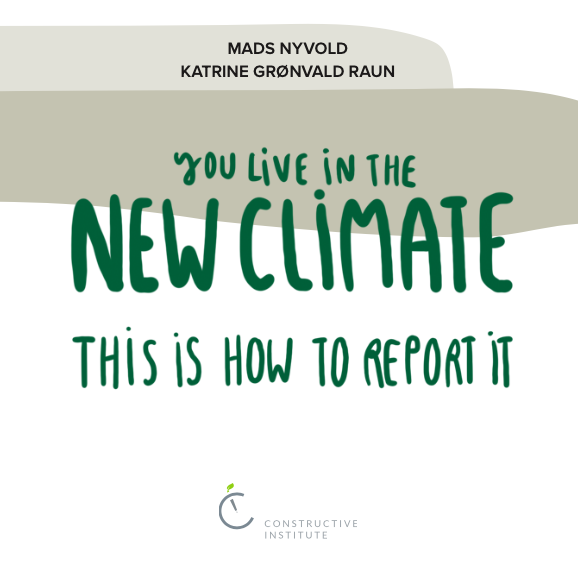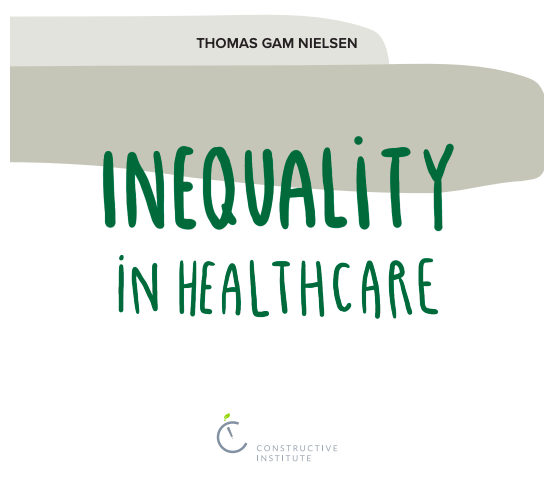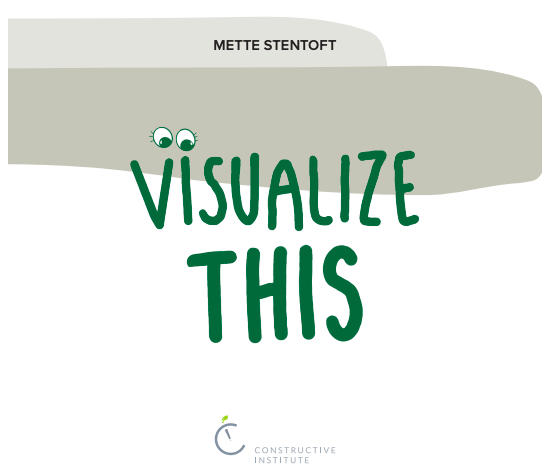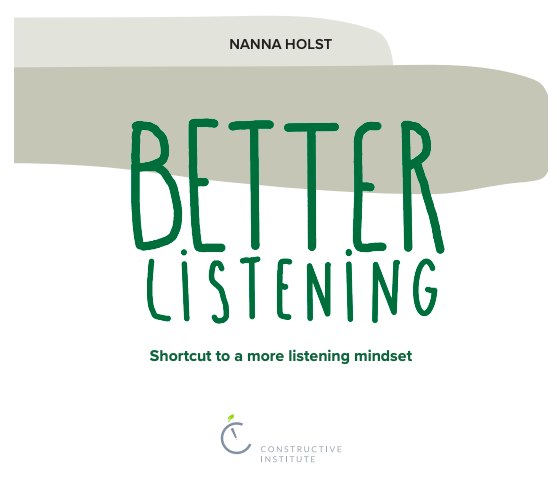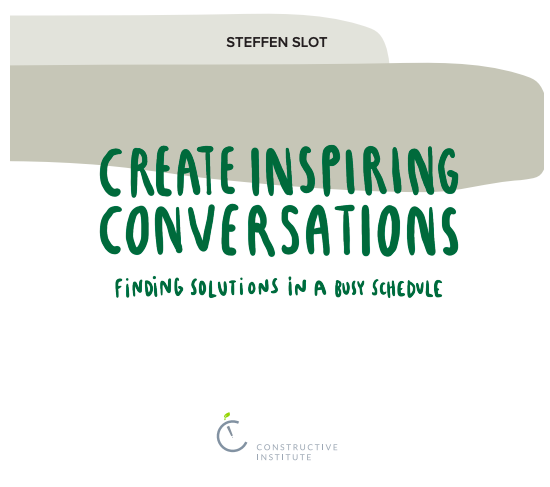Constructive Institute Fellows Showcase Inspiring Projects in New Booklets
5 JULY 2023
The Constructive Institute has released a series of five insightful booklets authored by some of this year’s team of fellows. These booklets aim to inspire journalists and media professionals by providing them with valuable tools and perspectives for reporting on crucial topics. Let’s take a closer look at each booklet and the impact it can have on journalism.
“You Live in the New Climate – This Is How You Report It” by Mads Nyvold and Katrine Grønvald Raun
Climate change is an all-encompassing subject that affects various aspects of our lives. However, it can often be challenging to engage readers and listeners due to its complexity. In this booklet, Mads Nyvold and Katrine Grønvand Raun equip journalists with the necessary tools and angles to make climate coverage more compelling and accessible. By incorporating climate change into their reporting, journalists can overcome the doubt of choosing the most relevant story and contribute to a broader understanding of this pressing issue.
“Inequality in Health – Advice for More Constructive Coverage of Inequality in Health” by Thomas Gam Nielsen
Inequality in healthcare, particularly social inequality, is a topic that politicians and the media often revisit. While scientific literature and media reports shed light on the evidence of inequality, there is often a lack of emphasis on constructive journalism that explores potential solutions and nuances. Thomas Gam Nielsen’s booklet serves as a guide for journalists, helping them write stories that not only highlight the problems but also delve into the possible solutions to inequality in health. The booklet provides examples of constructive journalism and offers valuable tips for effective reporting on this important subject.
“Visualize This – The Writer’s Guide to Making an Impact with Visuals” by Mette Stentoft
Visuals play a vital role in journalism, capturing readers’ attention and enhancing their understanding of complex topics. Mette Stentoft’s booklet addresses the challenges faced by journalists when selecting visuals for their articles. It explores scenarios where the perfect photo or illustration may not be readily available. Whether it’s navigating stock photos, AI image generators, collaborating with graphic departments, or seeking the expertise of illustrators, this guide equips journalists with the knowledge to make informed decisions. By harnessing the power of visuals effectively, journalists can engage audiences and enhance their comprehension of the stories being told.
“Better Listening – Shortcut to a More Listening Mindset” by Nanna Holst
Old media outlets worldwide look for ways to meet new demands and build a culture to support them. Nanna Holst’s booklet offers a unique model for doing just that. The Better Listening Method is an evidence-based way to help newsrooms relate more actively, systematically, and consistently to their target audiences. The approach brings diversity to perspectives, stories, and voices in journalism. It leads to increased user engagement, longer reading times, and greater loyalty from subscribers and donors. The logic behind the listening approach is simple: If we as media don’t care to listen to the people we serve, why should they care to listen to us?
“Create Inspiring Conversations – Finding Solutions in a Busy Schedule” by Steffen Slot
This booklet is a call to action for journalists who believe in the power of journalism to bring people together, exchange knowledge, and spark ideas. Steffen Slot emphasizes the importance of journalism as a platform for inspiring conversations that foster societal improvement. In a world where journalism has somewhat withdrawn from being a catalyst for interaction between the power elite and citizens, this guide aims to reestablish that connection. By involving citizens, politicians, public servants, and experts in discussions surrounding everyday problems, journalists can facilitate the generation of innovative solutions. The booklet provides valuable insights into the key areas of focus: the power elite, engagement, storytelling, and trust.
These five booklets, authored by fellows of the Constructive Institute, are meant to serve as valuable resources for journalists and media professionals seeking inspiration and guidance. By incorporating the knowledge and approaches presented in these booklets, journalists can hopefully enhance their storytelling, address pressing issues constructively, and contribute to a more informed and engaged society.
To explore the complete fellowship projects, visit here.

